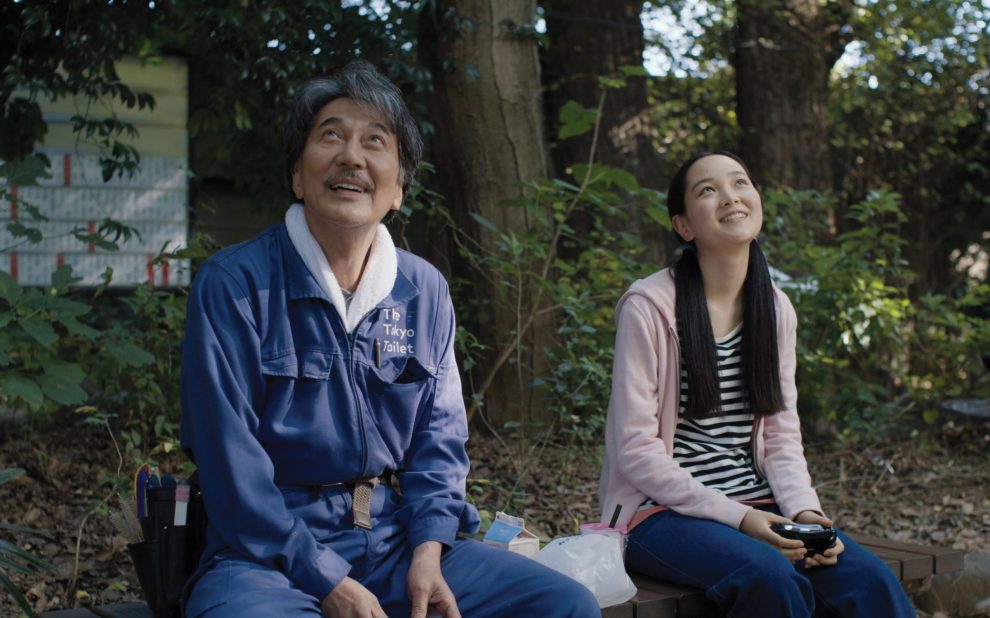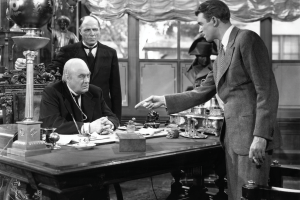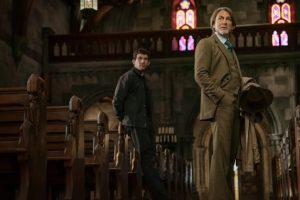When screening his exceptional film Pope Francis: A Man of His Word at the Film Society at Lincoln Center in New York, the internationally acclaimed filmmaker Wim Wenders offered his observations after meeting Pope Francis. Deeply impressed with his films, the Vatican had reached out to Wenders to ask if he would be interested in making a documentary about Pope Francis. After being assured of complete artistic autonomy, Wenders eventually found himself at the Vatican with a small film crew, awaiting the arrival of Pope Francis for a series of interviews. Wenders recounts how Pope Francis arrived by himself, without pomp or an entourage, and quickly put everyone at ease by greeting each member of the film crew individually and talking with them. Wenders was struck by this man who valued people above other things.
Significantly, this same quality of finding value in each individual life can be attributed to Wim Wenders’ impressive catalog of films. From award-winning feature films such as Wings of Desire to popular documentaries such as Buena Vista Social Club, Wenders has an eye for the everyday grandeur of each human life. He celebrates without romanticizing the creativity and dignity of lives lived intentionally.
His most recent film, Perfect Days, masterfully distills this theme to its essence. Nominated for Best International Feature Film at this year’s Academy Awards and garnering the Best Actor award for Koji Yakusho at the Cannes Film Festival, Perfect Days centers on the daily life of Hirayama, an elderly man who cleans public restrooms in Tokyo. Hirayama’s routine is simple: He wakes, tends his plants, drives to work listening to music, cleans restrooms all day, sits quietly in a park to eat his lunch, takes occasional photographs of light passing through the leaves of the trees, eats dinner at a small subway station diner, and reads a book before going to sleep. And yet each day he greets the morning sky with a smile and apparent gratitude. The camera observes all of this with minimal artifice. The pacing is slow. The words are few.
Hirayama in his quiet dignity commands the screen. We see him when so many others walk by without noticing him or ignore him completely. Hirayama, on the other hand, sees so much. He is attentive to all the details of the world around him. He sees the saplings that poke through the soil beneath a massive tree and the comings and goings of a man experiencing homelessness who lives near one of the restrooms. He’s so observant of details that a young coworker incredulously inquires why Hirayama cleans the restrooms so meticulously when they will just get dirty again. His silence on the matter is evocative.
In a sense, Hirayama is like the exemplary craftsmen in Zhuangzi’s classic Taoist text. Whether cooking a meal or carving wood, they do not impose their will but are instead completely attentive to the moment and what they are doing. Or, as Hirayama tells his niece later in the film, “Next time is next time. Now is now.”
This is not to say that Hirayama has no cares or interests or that he doesn’t get frustrated at times. He has, however, moved beyond societal notions of success and found a way of being that is true to who he is. As the audience witnesses this unique and intentional life, they discover the spiritual depth of a man who can find equal meaning in cleaning toilets for the people of Tokyo, playing tic-tac-toe with a stranger, or having a nice meal with a friend.
A unifying thread in Wenders’ films is the discovery of the rich inner lives of people who have found a way of being that fully expresses who they are. Wenders’ documentaries show us people not only “at home in their own skin” but who have also found a sense of purpose in their contributions to the world. Whether that be through dance, as in Wenders’ award-winning documentary Pina, a tribute to choreographer Pina Bausch; photography, as in photographer Sabastião Salgado’s distinctive lifelong journey, shining a light upon the hardships and joys of communities throughout the world in Salt of the Earth; or pastoring the Catholic Church to be a “church of the poor and for the poor” in Pope Francis: A Man of His Word.
The particular vocation is perhaps less relevant than the spirit and vision with which each person takes up their calling. In an interview with the New Yorker, Wenders said he’s drawn to “utopian characters,” such as Hirayama in Perfect Days, as they offer something toward which to aspire. But in Wenders’ documentaries, we see these characters are not “utopian” at all. In fact, they’re real people witnessing to real possibilities in our world. Part of the allure of Pope Francis in the film is his belief that things can change for the better, and he lives in a way to help bring about that change. This theme quietly underlies many of Wenders’ films, as if to say, “Look, these people are showing us another way.”
It’s impossible to discuss Wim Wenders without also talking about places. His films are keenly aware of location. Through his films and exceptional photography, Wenders observes with loving detail the places we shape and the places that shape us. The imagery in his films is breathtaking. Whether in Tokyo, Berlin, Lisbon, or Paris, he captures a visual landscape that is often a dialogue partner with the characters. His lingering cinematography gives these places voices of their own, offering lasting impressions.
In Wings of Desire, for example, angels observe the lives of everyday people in Berlin in the mid-1980s. The angels can hear everyone’s thoughts and can provide some comfort and peace of mind with a touch. The city, captured in sumptuous black and white, becomes a character in itself as the angels wander far and wide, through all walks of life. The people often seem lonely, disconnected, and isolated in the vast city.
Contrast this with Buena Vista Social Club’s Havana in the late 1990s, where people congregate, talk in the streets, and spontaneously sing songs and share stories. Here, a completely different “character” of place emerges. Brilliantly colored cars (their age witnessing to the U.S. economic embargo) and buildings convey a vibrancy and spirit of perseverance that reinforces the music of this people and place.
This attentiveness to the dignity and autonomy of places also makes Wenders a powerful visual companion to Pope Francis, as he articulates the pope’s message of care for our common home.
Wenders sees not just the sacredness of these places but their unique personalities. Indeed, his artistic journey seems twofold. He has an unquenchable drive to share the beauty he sees in the people and places he encounters—and he desires to inspire visions of a common good where the world and all of its people can flourish. This may seem utopian to some people, but, as witnessed by the subjects of his films, nothing happens if you don’t work for it.
This article also appears in the July 2024 issue of U.S. Catholic (Vol. 89, No. 7, pages 36-37). Click here to subscribe to the magazine.
Image: NEON Cinema, from Perfect Days












Add comment